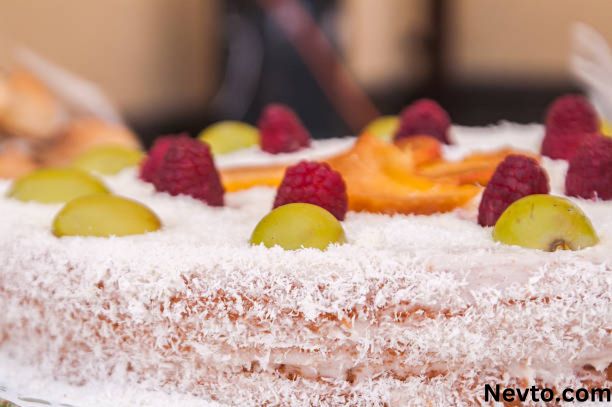From Oven to Table: 8 Steps to Perfect Cake Fricassee
Cake Fricassee brings together the best of both worlds – the comforting flavors of tender stewed meat wrapped in sweet, fluffy cake. While it may sound unusual, this savory-sweet specialty has graced tables from royal banquets to family suppers for centuries. Follow these 8 foolproof steps to prepare the ultimate cake fricassee for your next special meal.
Table of Contents
Choose Your Cake and Filling
The foundation of stellar cake fricassee lies in the interplay between the mild cake layers and the hearty fricassee filling.
Selecting the Cake
When it comes to the cake component, opt for versatility. Cake fricassee welcomes everything from golden yellow cake to rich chocolate layers to simple white cakes. The cake should be dense enough to support the filling without getting soggy.
Yellow cake makes a classic base with its mild vanilla notes that complement most fillings without overpowering. Foolproof and ultra-moist, this sunny cake allows the fricassee flavors to shine.
Preparing the Filling
While chicken or veal fricassee is traditional, get creative with the slow-cooked filling. Rabbit, turkey, and even seafood work wonderfully.
Chicken Fricassee
Chicken simmered in white wine and aromatics makes an easy, crowd-alluring filling. Infuse flavor with onions, carrots, celery and sparkling herbs earlier than adding lemon and cream.
Rabbit Fricassee
For special occasions, rabbit fricassee lends a sophisticated, gamey depth. Braise rabbit pieces in broth with mushrooms and bacon. Splash in some sherry before finishing with parsley and tarragon. Read Jacquard Fabric: A Unique Textile Woven on Specialized Looms
Now that you’ve selected the cake and fricassee filling, it’s time to start cooking!
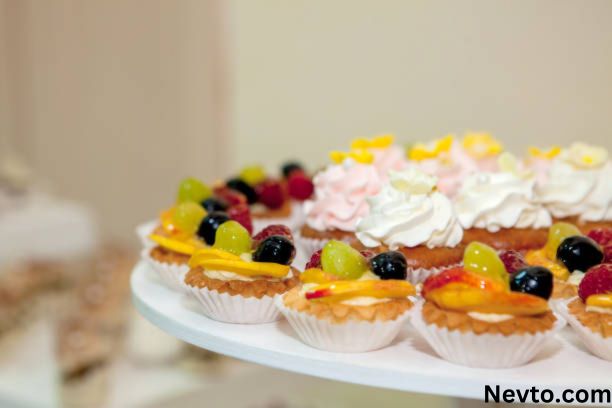
Step 1: Prepare the Fricassee
Cooking the fricassee filling is easiest done a day in advance. This allows the luxurious flavors to meld, and gives time for the filling to chill completely before assembling the cake.
Browning the Meat and Aromatics
In a huge skillet, brown the protein and fragrant veggies (onions, carrots, celery) over medium-excessive warmness. This caramelization provides a depth of flavor that simmers superbly into the sauce. Make sure to pat the meat dry first, so browning happens flippantly.
Simmering the Broth
Once browned, switch contents to a pot at the side of broth, wine or cider, herbs, and seasonings. Bring to a gentle simmer and cook dinner uncovered till meat is fork-smooth, about an hour. Skim fats and impurities as desired. The liquid must lessen down to a lush sauce coating the substances.
Creamy Finishing Touches
Just before removing from heat, stir in cream, lemon juice or other acid to brighten. Thicken further with a bit of beurre manié if desired.
Once cooled fully, the fricassee can be wrapped and refrigerated up to 3 days before assembling into the cake.
Step 2: Bake the Cake Layers
With the filling prepped, shift focus to baking the cake layers.
Preparing the Cake Batter
Whisk collectively the dry ingredients like flour, baking powder, and salt. In another bowl, beat the butter and sugar until light and fluffy before beating in eggs, milk and vanilla.
Tips for Moist, Tender Cakes
- Bring all ingredients to room temperature
- Avoid over-mixing the batter
- Grease pans and line with parchment
Baking the Rounds
Divide batter evenly between two round cake pans. Smooth the tops. Bake at 350°F for 30-40 mins until a toothpick inserted into the middle comes out easy.
Cooling and Leveling
After golden brown cakes emerge from the oven, allow them to cool completely in the pans before turning out. Once cooled, use a serrated knife to carefully slice rounded tops for a flat surface to build upon. Read What is Commonly Misdiagnosed as Pink Eye?
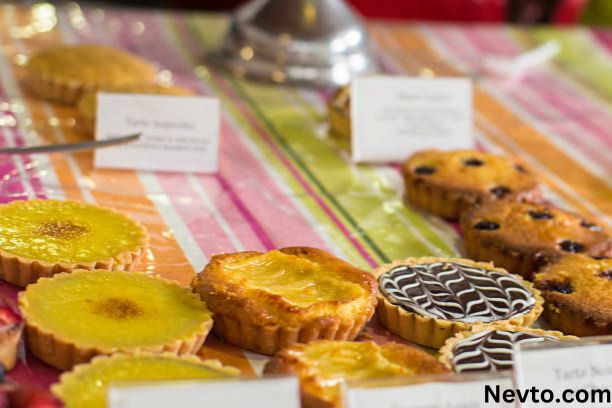
Step 3: Make Delectable Embellishments
While the cakes chill in the refrigerator, take this opportunity to fashion sweet garnishes that adorn the finished cake fricassee.
Whipped Cream
Lightly sweeten some heavy cream with sugar and a splash of vanilla or other liqueur. Whisk by hand or in a stand mixer until soft, billowy peaks form. Chill until ready to serve.
Fruit Compotes
Simmer fresh or frozen fruits like berries, stone fruits, pears or rhubarb with sugar and aromatics until thickened to a chunky sauce. The sweet, vibrant fruit beautifully bridges the fricassee and cake.
Candied Nuts
Brown sugar, butter and spices cling to nuts for a crisp, addictive candy crunch. Fold toasted walnuts, pecans or almonds into the creamy frosting or sprinkle over the finished cake. Read Al-Hamra Mosque, Fes, Morocco – All about to know
Step 4: Assemble the Layers
Once components are complete, it’s time for the fun part – assembling!
Placing the First Layer
Set one cake layer atop your serving platter or cardboard cake round. Brush any stray crumbs away.
Spreading on the Fricassee
Spoon half the chilled fricassee evenly over the first layer, taking care to spread it all the way to the edges.
Chilling Between Layers
Place the filled layer in the refrigerator while preparing the second cake layer for optimal viscosity of the fricassee and stiffness of the cake layer.
Topping with the Second Cake
Retrieve the filled cake layer from the fridge and top evenly with the second cake round. More fricassee and cake layers can be added for taller creations!
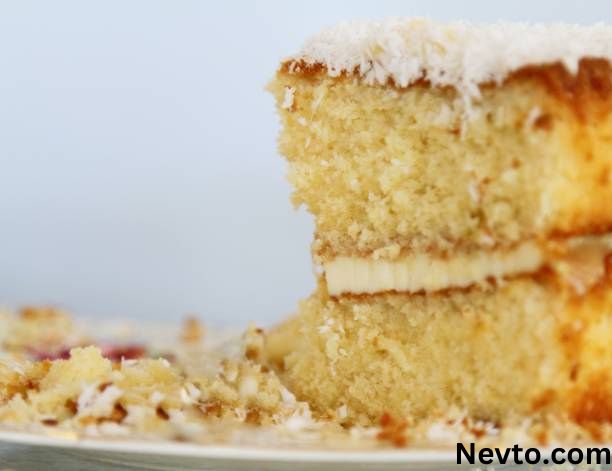
Step 5: Create a Crumb Coat
Before decorating fully, a crumb coat will ensure stray crumbs don’t mar the final presentation.
Applying the Thin Frosting Layer
Use an offset or butter knife to spread a very thin layer of frosting over the top and sides. This glue-like layer seals in moisture and grabs loose fragments.
Chilling for Firmness
Return the crumb coated cake fricassee to the refrigerator for at least 30 minutes. This firms up the frosting to better hold decorative piping while keeping the layers beneath cool and stabilized.
Step 6: Add Decorative Frosting and Embellishments
Once the crumb coat has set up, it’s time to garnish the cake fricassee with silky frosting, fruit preserves and candied nuts.
Frosting Borders and Ornamentation
Mix colored frostings and load into piping bags. Embellish the top and bottom border with shells, ropes or ribbons. Continue piping decorative stripes, dots and flowers across the surface.
Fanciful Fruit
Dot the frosted cake with spoonfuls of glistening fruit compote or preserves. Let it drip playfully down the sides like jewel toned glaze.
Candied Nut Clusters
Finally, decorate with candied pecans, walnuts or almonds. The sweet, salty crunch plays perfectly against the stewed meat filling.
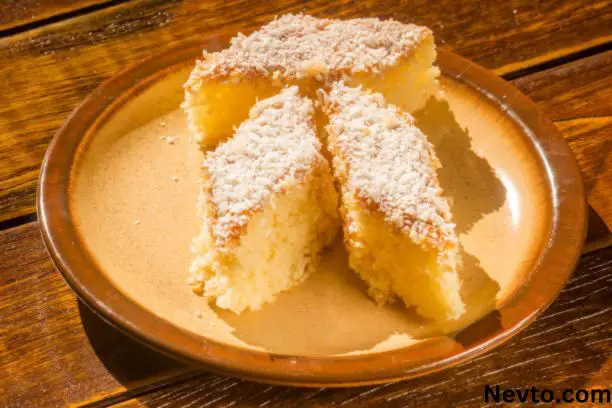
Step 7: Chilling for Optimal Sliceability
Before serving, let your showstopping creation chill for at least 2 hours, or up to overnight. This firms the interior while also allowing flavors to permeate the cake layers.
Troubleshooting Cracking or Slumping
If cracking or slumping occurs after decorating, simply smear a little frosting over problem areas and return to the fridge to set. Your guests will be none the wiser!
Step 8: Impress Guests with Gorgeous Sliced Servings
It’s finally time to slice into your towering cake fricassee masterpiece. Pull out all the stops at dessert time!
Sharp Knives are Key
For neat, handsome slices use a long serrated bread knife. Wipe clean between slices and cut gently in a sawing motion.
Artful Plating
Adorn each slice with extra fruit, nuts and a hearty dollop of sweetened whipped cream for a show-stopping presentation.
Offer Second Helpings
Let guests know leftovers will be happily stored and served again. A triple layer cake fricassee like this won’t last long!
Storing and Freezing Leftover Cake Fricassee
Like any frosted cake, cake fricassee keeps well chilled for 3-4 days when properly stored. Cover loosely at first to prevent condensation before wrapping tightly.
To extend its shelf life for up to 6 months, this impressive cake freezes beautifully.
Freezing the Undecorated Cake
Wrap each layer individually in plastic before freezing if you baked the cake ahead. When ready to decorate, thaw overnight in the fridge before assembling and frosting.
Freezing the Decorated Cake
Tightly wrap the finished, frosted fricassee in two layers of plastic wrap followed by a layer of aluminum foil. Thaw overnight in the refrigerator and touch up any frosting before serving.
Troubleshooting Common Cake Fricassee Problems
While these steps promise prizewinning cake fricassee, mistakes occasionally happen. Arm yourself with solutions!
Dry, Crumbly Cake Layers
Overbaked cake layers turn dry. Avoid this by properly greasing pans and not overmixing the batter. Brush layers with flavored syrup if needed before assembling.
Unbalanced Flavors
Remedy lackluster flavor by amplifying seasonings in the filling or adding liqueurs to the cake soak. Sweeten whipped cream for serving.
Runny Filling
If the fricassee loses viscosity, return to the stovetop to simmer down again before assembling cake. Adding a roux or beurre manié mixture will also thicken.
Frosting Crumbling Off
Stabilize frosting with powdered sugar and chill the cake longer. Be sure to crumb coat first and use a serrated knife for clean slices. Repatch and rechill as needed. Read The Revolutionary Innovation of HQpotner: A Game-changer in the Tech Industry
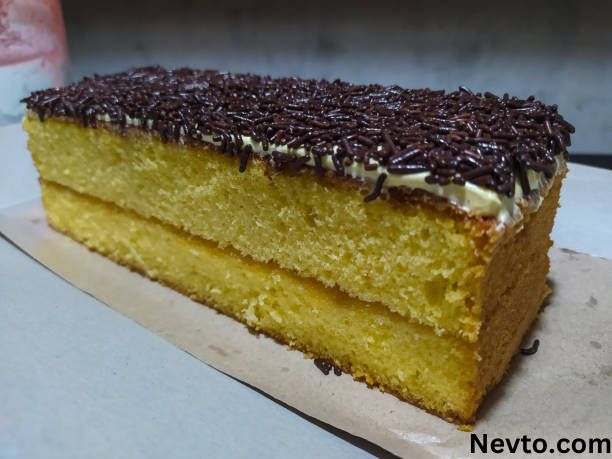
FAQ’s
Still hungry for more intel on fabulous cake fricassee? Here are answers to the top questions:
What are the origins of cake fricassee?
Cake fricassee dates back to Medieval Europe when cooks made use of leftover stewed meats by baking them into pastry shells or sweet breads along with fruit preserves. The concept caught on for being both delicious and practical!
What protein works best in the filling?
Chicken, veal and rabbit all make wonderfully succulent fillings. Seafood like shrimp or lobster also pair swimmingly with the cake component.
What’s the best way to flavor the cake?
For white or yellow cakes, infuse with aromatic vanilla, almond extract or citrus zest. Chocolate layers benefit from spices like cinnamon and cardamom or boozy extracts.
Should I make the cake gluten free?
Certainly! Swap the flour for your favorite gluten free blend. Just be sure to still layer generously with fricassee for needed moisture.
How do I adjust the recipe for a dairy allergy?
Opt for dairy free butter and milk when preparing the cake and frosting. Omit cream from the stewed filling, adding velvety puréed beans or silken tofu instead.
Whip up this royal centerpiece cake fricassee for your next special supper using local, seasonal ingredients. Impress everyone with your sophisticated cooking skills merged with a dash of whimsy! From preparation to presentation, relish in every delectable bite of this centuries-old yet still novel treat.

